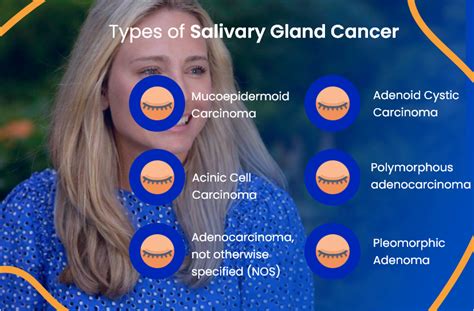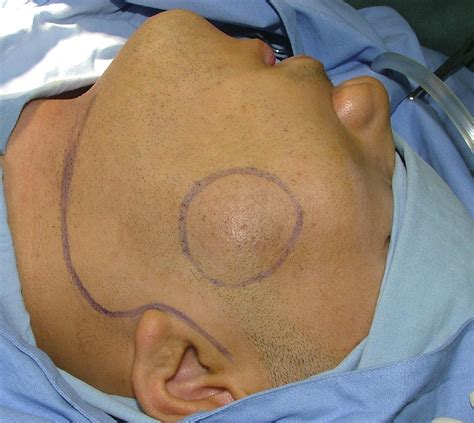prada gland cancer | parotid gland cancer imaging prada gland cancer A parotid gland tumor is an abnormal mass or tumor on your parotid gland. Your parotid gland . The Stocks/Bonds 60/40 Portfoliohas the following asset allocation: The Stocks/Bonds 60/40 Portfolio can be implemented with the following ETFs: Most of Lazy Portfolios are . See more
0 · parotid gland tumor pictures
1 · parotid gland cancer treatment
2 · parotid gland cancer imaging
3 · non cancerous parotid gland tumor
4 · cancerous parotid gland cancer
$117K+
The parotid glands are the most common place that salivary gland tumors happen. Most parotid tumors aren't cancerous. These are called noncancerous or benign parotid tumors.
A stage 0 salivary gland cancer is small and only in the gland. As the cancer gets .Salivary gland tumors can happen in any salivary gland. Most salivary gland .A parotid gland tumor is an abnormal mass or tumor on your parotid gland. Your parotid gland .
A tumor of the parotid salivary gland arises from an overgrowth of cells. “There are different . Salivary gland tumors can happen in any salivary gland. Most salivary gland . Objectives: Outline the types of salivary gland tumors. Describe how to properly evaluate a patient for salivary gland tumors. Review the treatment and management options available for salivary gland tumors. Explain the .Salivary gland cancer starts in one of the salivary glands. There are several different salivary .
Parotidectomy is surgery to remove all or part of a major salivary gland in your . Parotid gland tumors develop in the parotid gland, which is the largest of the . The parotid glands are the most common place that salivary gland tumors happen. Most parotid tumors aren't cancerous. These are called noncancerous or benign parotid tumors.
A parotid gland tumor is an abnormal mass or tumor on your parotid gland. Your parotid gland is the largest of your three salivary glands and is found just in front of each of your ears. Most parotid gland tumors are noncancerous (benign), but about 20% are malignant (cancerous). So, how do you know if you have salivary gland cancer? Will you suddenly start drooling or have a really dry mouth? How is salivary gland cancer usually diagnosed? We went to head and neck surgeon Amy Hessel, M.D., for answers. What are the symptoms of .A tumor of the parotid salivary gland arises from an overgrowth of cells. “There are different types of tumors, but the most common type is pleomorphic adenoma, a slow-growing tumor. In very unusual circumstances, this type of tumor can become cancerous,” Eisele says. Salivary gland tumors can happen in any salivary gland. Most salivary gland tumors occur in the parotid gland. Of these, most aren't cancer. For every five parotid gland tumors, on average, only one is found to be cancerous. Treatment for salivary gland tumors is usually with surgery to remove the tumor.
Objectives: Outline the types of salivary gland tumors. Describe how to properly evaluate a patient for salivary gland tumors. Review the treatment and management options available for salivary gland tumors. Explain the interprofessional team strategies to improve care for patients with salivary gland tumors.
Salivary gland cancer starts in one of the salivary glands. There are several different salivary glands inside and near your mouth. Benign (non-cancer) and malignant (cancer) tumors can develop in these glands. Compared to other types of head and neck cancers, salivary gland cancers are rare. Parotidectomy is surgery to remove all or part of a major salivary gland in your cheek called your parotid gland. You may need this surgery if a tumor forms in your parotid gland. Most tumors are benign (noncancerous), but they can be cancerous (malignant). Parotid gland tumors develop in the parotid gland, which is the largest of the salivary glands. While many of these tumors are benign, most salivary gland cancers begin in the parotid gland.
parotid gland tumor pictures
bones. brain. Salivary gland cancer most frequently originates in the parotid gland, which is the largest salivary gland located just in front of the ears. But research indicates that distant. The parotid glands are the most common place that salivary gland tumors happen. Most parotid tumors aren't cancerous. These are called noncancerous or benign parotid tumors.
A parotid gland tumor is an abnormal mass or tumor on your parotid gland. Your parotid gland is the largest of your three salivary glands and is found just in front of each of your ears. Most parotid gland tumors are noncancerous (benign), but about 20% are malignant (cancerous).
So, how do you know if you have salivary gland cancer? Will you suddenly start drooling or have a really dry mouth? How is salivary gland cancer usually diagnosed? We went to head and neck surgeon Amy Hessel, M.D., for answers. What are the symptoms of .A tumor of the parotid salivary gland arises from an overgrowth of cells. “There are different types of tumors, but the most common type is pleomorphic adenoma, a slow-growing tumor. In very unusual circumstances, this type of tumor can become cancerous,” Eisele says. Salivary gland tumors can happen in any salivary gland. Most salivary gland tumors occur in the parotid gland. Of these, most aren't cancer. For every five parotid gland tumors, on average, only one is found to be cancerous. Treatment for salivary gland tumors is usually with surgery to remove the tumor.
Objectives: Outline the types of salivary gland tumors. Describe how to properly evaluate a patient for salivary gland tumors. Review the treatment and management options available for salivary gland tumors. Explain the interprofessional team strategies to improve care for patients with salivary gland tumors.Salivary gland cancer starts in one of the salivary glands. There are several different salivary glands inside and near your mouth. Benign (non-cancer) and malignant (cancer) tumors can develop in these glands. Compared to other types of head and neck cancers, salivary gland cancers are rare. Parotidectomy is surgery to remove all or part of a major salivary gland in your cheek called your parotid gland. You may need this surgery if a tumor forms in your parotid gland. Most tumors are benign (noncancerous), but they can be cancerous (malignant).
Parotid gland tumors develop in the parotid gland, which is the largest of the salivary glands. While many of these tumors are benign, most salivary gland cancers begin in the parotid gland.
parotid gland cancer treatment
gucci emily guccissima medium

gucci flower embroidered jeans

parotid gland cancer imaging
55mm Round Sunglasses. Ray-Ban. $168.00. Free shipping. A keyhole .
prada gland cancer|parotid gland cancer imaging



























